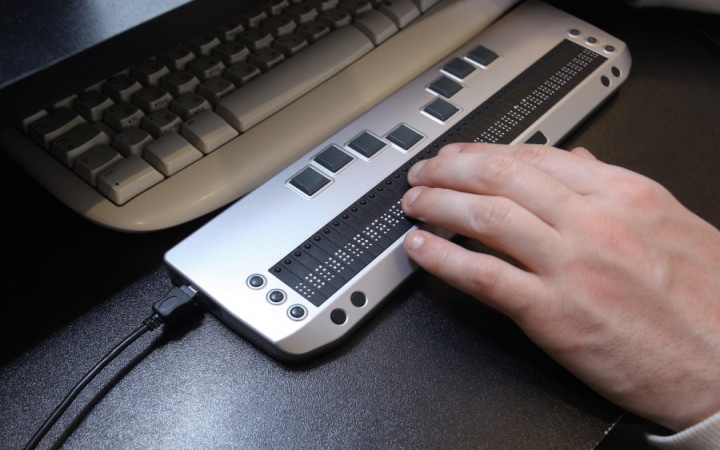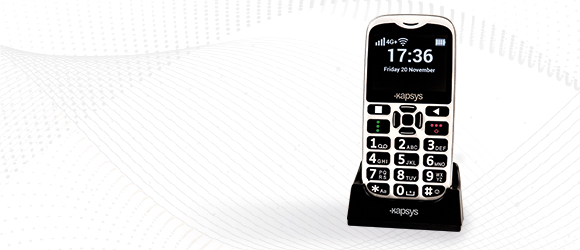Assistive Technology for the Blind: Solutions to Transform Lives
Assistive Technology for the Blind: Solutions to Transform Lives
Blog Article
Discover Cutting-edge Tools Designed for the Visually Impaired
The development of ingenious devices for the aesthetically damaged stands for a significant improvement in availability and independence. Technologies such as smart glasses with AI capacities and mobile applications designed to offer auditory descriptions are reshaping daily experiences for customers. In addition, wearable tools that employ haptic responses enhance environmental awareness, while modern-day Braille developments provide new means to involve with text. As these devices proceed to progress, their impact on the lives of those with aesthetic impairments increases important questions concerning the future of inclusivity and freedom in various aspects of life. What exists ahead in this technical landscape?
Smart Glasses for Navigation

Smart glasses made for navigating are reinventing the way aesthetically damaged individuals interact with their atmosphere. These innovative devices utilize a combination of cam innovation, expert system, and acoustic feedback to supply real-time information about environments. By employing barrier detection systems, clever glasses can signal users to prospective hazards, enabling much safer wheelchair in both familiar and unknown settings.
The combination of GPS technology further enhances navigating capacities, permitting users to obtain acoustic instructions as they move. This hands-free approach not just fosters independence but likewise empowers aesthetically impaired individuals to navigate urban landscapes with boosted self-confidence. Additionally, many wise glasses are furnished with features that recognize sites and street indicators, giving contextual information that improves the customer experience.
In addition, the advancement of these gadgets is continuously progressing, with companies functioning to enhance the precision of item acknowledgment and expand the array of navigational features. As smart glasses end up being much more affordable and accessible, they hold the potential to substantially transform day-to-day live for aesthetically damaged individuals. Ultimately, these innovative devices stand for a critical step toward inclusivity, offering boosted movement and a better sense of autonomy for people navigating the world around them.

Mobile Application for Daily Living
Just how can mobile applications enhance the every day lives of aesthetically impaired people? Mobile applications are revolutionizing the method visually damaged customers navigate their environments, take care of day-to-day tasks, and access info. These applications supply vital support with numerous performances, fostering independence and enhancing quality of life.
A number of innovative mobile applications are created especially for day-to-day living. Apps like Be My Eyes connect visually damaged individuals with sighted volunteers via video phone calls, allowing them to obtain real-time help with tasks such as checking out labels or navigating unfamiliar areas. Seeing AI, established by Microsoft, makes use of artificial knowledge to describe environments, read message, and determine items, effectively transforming a mobile phone into an effective tool for day-to-day help.
In addition, navigation applications tailored for the aesthetically damaged, such as Aira and BlindSquare, provide audio-based directions and ecological details, enabling customers to traverse their environments safely and with confidence. Past navigation and immediate support, mobile apps also support company and job management, with attributes that aid users set tips, develop order of business, and track visits. In summary, mobile applications function as important resources, equipping visually impaired individuals to lead even more independent and satisfying lives.
Wearable Technologies for Support
Empowerment via modern technology is significantly noticeable in the world of wearable gadgets developed to assist visually damaged individuals. These cutting-edge tools integrate flawlessly right into life, improving navigation and giving essential feedback to users. Clever glasses equipped with electronic cameras can read and acknowledge faces message aloud, allowing users to unbreakable reading glasses interact more confidently in social and expert setups.
An additional significant advancement is making use of haptic comments systems in wearable devices. These systems use resonances or other tactile signals to convey information concerning the user's setting, such as barriers or modifications in surface, enhancing movement and safety and security. Wearable innovations additionally include wristbands that connect to smartphones, notifying customers to notifications through subtle vibrations, hence enhancing connection without dependence on visual hints.
As these modern technologies remain to advance, they are not only enhancing independence for visually impaired people yet likewise cultivating a higher feeling of addition in culture. By linking the gap between difficulties encountered in day-to-day living and the potential for freedom, wearable technologies serve as pivotal tools in the mission for equal rights and empowerment for those with visual disabilities.
Audio Description Devices
Audio summary tools play an essential role in boosting access for visually impaired individuals, supplying them with the capability to engage with visual media. Speech-to-text devices for low vision. These devices offer narrated descriptions of vital visual aspects in films, tv programs, and live efficiencies, guaranteeing that individuals can totally comprehend the context and feelings communicated through visuals
Sound summary can be incorporated into different systems, consisting of streaming solutions, movie theater screenings, and live cinema. Lots of popular streaming solutions currently consist of audio dry eye disease description as an accessibility attribute, enabling visitors to pick it conveniently. In enhancement to conventional media, specialized apps additionally exist, giving audio descriptions for art exhibits, museums, and various other social occasions.
The effectiveness of audio summary rests on the skill of the storytellers, that need to communicate visual information succinctly without diminishing the initial audio. Developments in this area are also leading the way for more individualized experiences, where individuals can readjust the level of information and pacing according to their preferences.
Braille Innovations and Devices
Braille developments and tools have actually considerably transformed the way visually damaged people engage with text and info. Modern developments have led to the advancement of flexible devices that enhance literacy and self-reliance among individuals.
In addition, mobile Braille notetakers combine standard Braille input with modern-day capabilities, helping with note-taking, scheduling, and record modifying on the move. Screen readers for the blind. These portable devices typically include text-to-speech capacities, connecting the void between Braille and acoustic details
Additionally, ingenious Braille printers have arised, enabling individuals to generate Braille labels, files, and read this academic products successfully. This access promotes greater involvement in specialist and academic atmospheres, eventually promoting inclusivity.
Moreover, study into smart Braille innovations continues to increase. Gadgets that incorporate expert system are being explored to give real-time navigation aid and contextual info, boosting the individual experience in varied settings. In general, these developments show a commitment to equipping aesthetically impaired people with modern technology, ensuring they can quickly accessibility and engage with the world around them.

Conclusion
The innovation of innovative devices for the visually impaired considerably boosts self-reliance and quality of life. These innovations not just foster higher inclusion yet likewise advertise autonomy in daily activities, eventually adding to a much more fair and available society for aesthetically impaired individuals.
As wise glasses become extra easily accessible and economical, they hold the prospective to significantly transform everyday life for visually impaired users. Mobile applications are transforming the way aesthetically impaired individuals navigate their atmospheres, handle daily jobs, and accessibility info. Apps like Be My Eyes link aesthetically damaged users with sighted volunteers by means of video clip calls, permitting them to receive real-time help with tasks such as checking out tags or navigating unfamiliar areas.In addition, navigation applications tailored for the aesthetically damaged, such as Aira and BlindSquare, supply audio-based directions and ecological details, allowing customers to traverse their environments securely and with confidence.The development of innovative devices for the aesthetically damaged considerably enhances independence and top quality of life.
Report this page